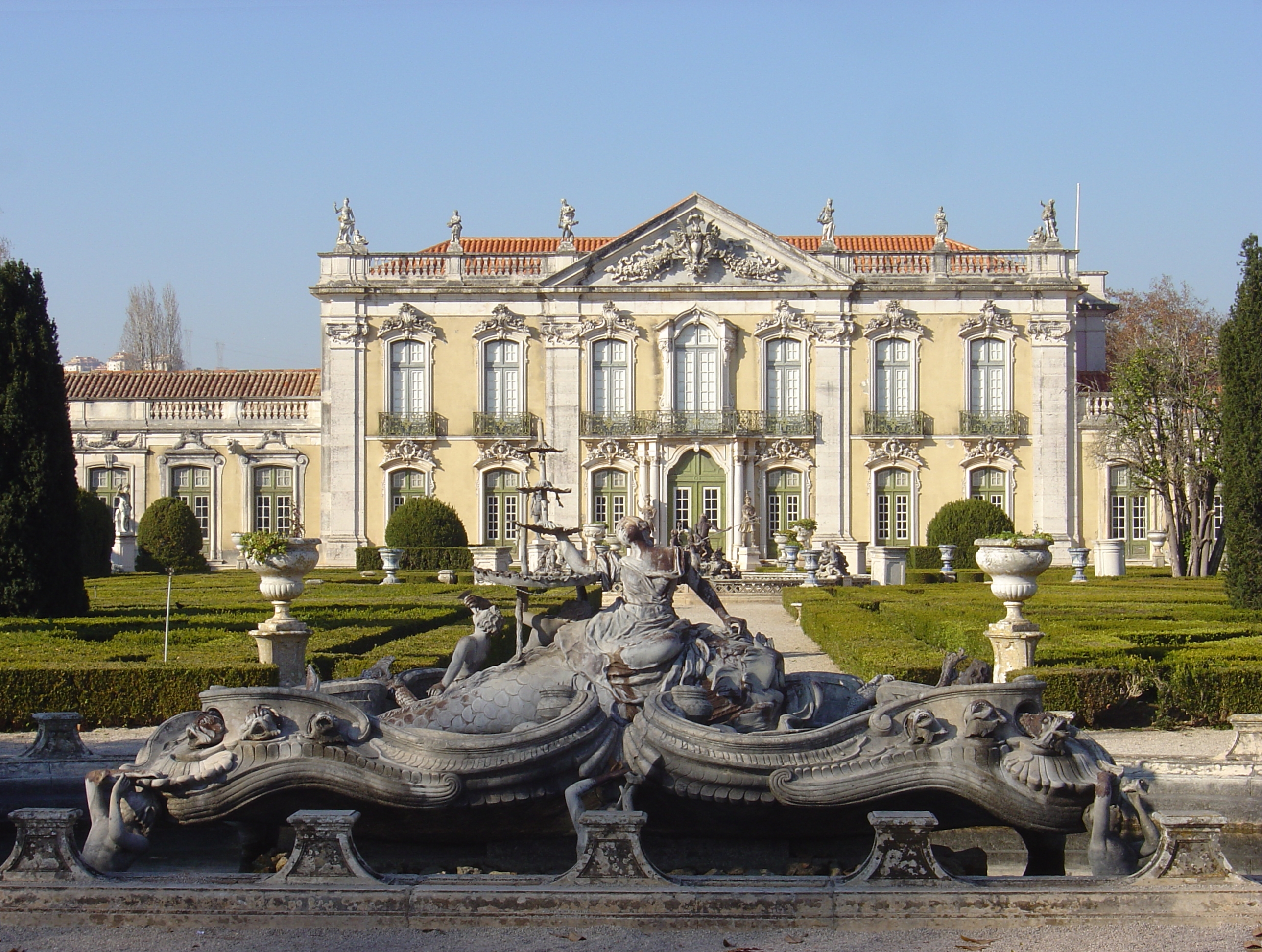Rococo Architecture In Portugal on:
[Wikipedia]
[Google]
[Amazon]
 Rococo architecture entered Portugal through the north, while
Rococo architecture entered Portugal through the north, while
Lisbon
Lisbon (; pt, Lisboa ) is the capital and largest city of Portugal, with an estimated population of 544,851 within its administrative limits in an area of 100.05 km2. Grande Lisboa, Lisbon's urban area extends beyond the city's administr ...
, due to the court pomp, remained in the Baroque
The Baroque (, ; ) is a style of architecture, music, dance, painting, sculpture, poetry, and other arts that flourished in Europe from the early 17th century until the 1750s. In the territories of the Spanish and Portuguese empires including t ...
. It is an architecture that follows the international taste in decoration, and, as a result of the contrast between dark granite and white walls, has a clearly Portuguese profile. The decoration is naturalist, based mainly in shells and leaves but also with architectural elements and sculpture. Pilgrimage places became fashionable, often built in places of rough prominence, allowing impressive staircases of big scenographic effect. André Soares worked in the region of Braga, and produced some of the main examples such as Falperra Church
Falperra Church or the Church of Santa Maria Madalena () is a Baroque church located in the (serra da Falperra) Falperra mountains, outside of Braga, Portugal.
About
The church was built in the early 18th century, by order of the Archbishop D. R ...
, Congregados Basilica
The Congregados Basilica in Portuguese, Igreja dos Congregados is a Portuguese 18th-century baroque Basilica in Braga, Portugal
Portugal, officially the Portuguese Republic ( pt, República Portuguesa, links=yes ), is a country whose mainl ...
, the Braga City Hall
The Braga Town Hall (in Portuguese ''Paços do Concelho de Braga'') is a landmark building located in Sé parish in the heart of Braga, Portugal. In there is located the headquarters of the ''Câmara Municipal'', the city local government.
I ...
, and Raio Palace
The Palace of Raio ( pt, Palácio do Raio) is a Baroque era residence in the urbanized area of the municipality of Braga, in the civil parish of São José de São Lázaro. It is an example of the late Baroque, early Rococo style of decoration by ...
, among many others. The number of buildings and architects is large and, because the north of Portugal was spared from the ravages of the 1755 Lisbon earthquake
The 1755 Lisbon earthquake, also known as the Great Lisbon earthquake, impacted Portugal, the Iberian Peninsula, and Northwest Africa on the morning of Saturday, 1 November, Feast of All Saints, at around 09:40 local time. In combination with ...
, there is a large number of buildings.
In the south, as a result of the lower population density, the court taste and also of the consequence of the earthquake there are fewer rococo buildings. But there still remain many examples such as the Palace of Queluz. Designed by Mateus Vicente de Oliveira
Mateus Vicente de Oliveira (1706–1786) was a Portuguese architect. He studied under the architects João Frederico Ludovice and Jean Baptiste Robillon during the construction of the royal palace at Mafra - Portugal's attempt to rival the Span ...
, it became the residence of the royal family under the reign of Queen Maria I. Made according to the French taste for prince Dom Pedro Dom Pedro (''Lord Peter'') is the traditional Portuguese appellation of several kings of Portugal:
* Peter I of Portugal
* Peter II of Portugal
* Peter III of Portugal
* Pedro IV of Portugal
* Pedro V of Portugal
and of the two 19th-century Emperors ...
, King José’s brother, it is characterized by good taste and elegance. It boasts Rococo gardens and water games in a large park. The interior is decorated with paintings, sculptures, mirrors, tile, and gilded woodcarving. The chapel, as a result of the junction of carved wood, marble and coloured stones, reflects a classical taste unusual in the Portuguese Rococo. The building received subsequent extensions during the neoclassical period.
Lisbon’s main Rococo church, the Estrela Basilica, is the last major Rococo building in the city, showing the influence of Palace of Mafra, but has also undeniable similarities with Pombaline style churches, particularly in the front. The elegant towers and dome cannot hide the Pombaline style vocabulary at the façade, despite the sculpture and relieves. The interior is covered with traditional Baroque coloured marbles.
See also
* Rococo in Spain * Pousada of D. Maria {{Architecture of Portugal Early Modern history of Portugal